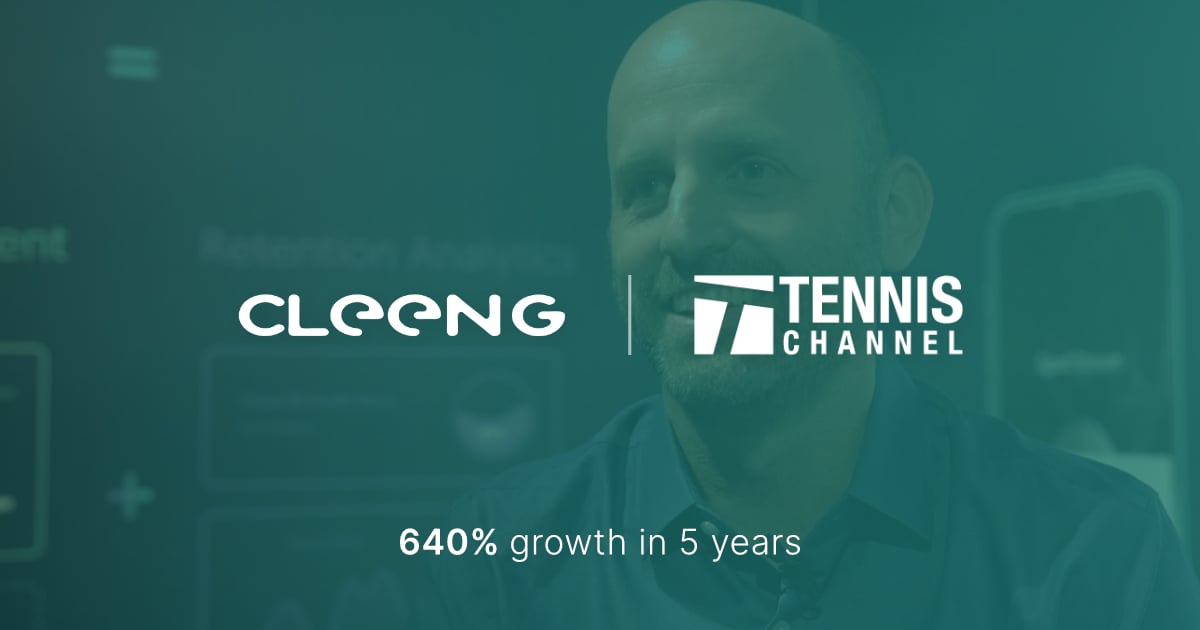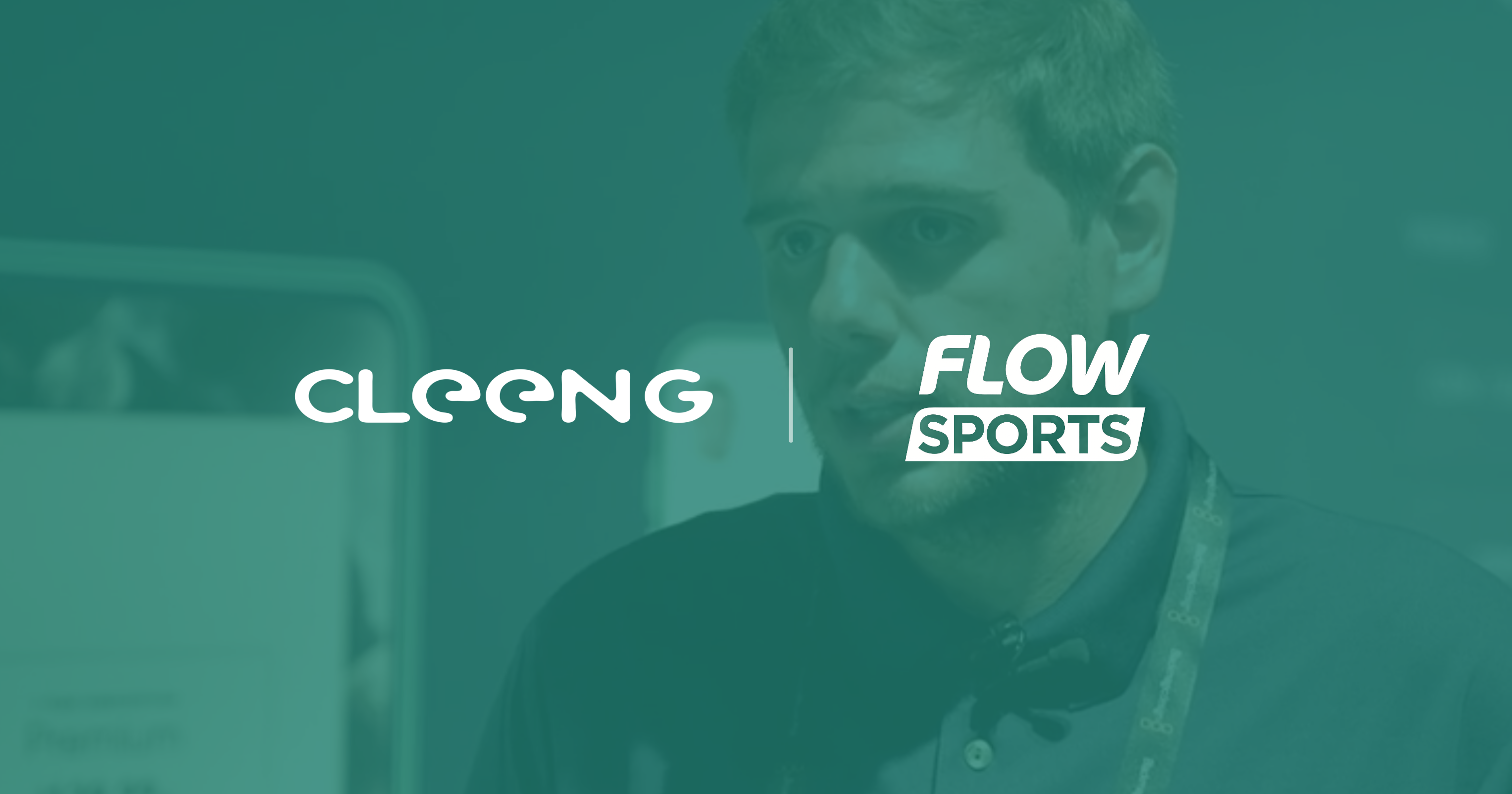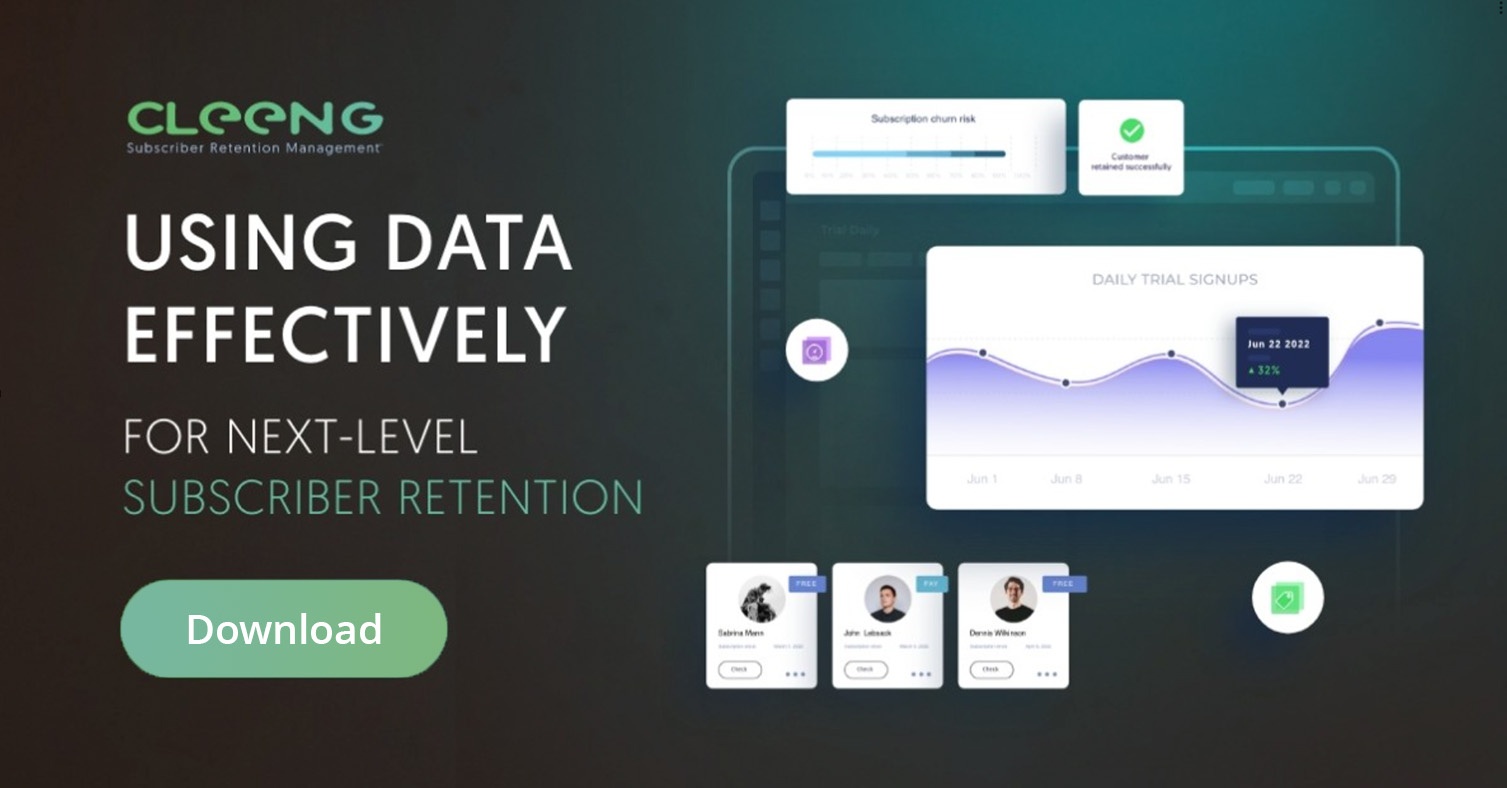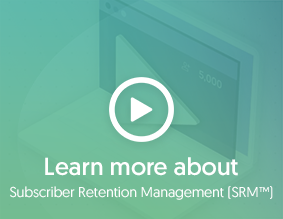
Do you need help to grow your OTT revenue? If so, you’re far from alone. Streaming products and services are embracing maturity, and there is a surge in competition in the media and entertainment realm.
For this reason, the winners will be companies with a rock-solid subscriber retention management strategy.
In this blog post, we’ll give you ideas to grow OTT customer lifetime revenue by acquiring new customers and improving customer retention.
Exceed customer expectations, beat subscription fatigue
On paper, the recipe is quite simple. You probably know everything there is to know about subscription fatigue and how it’s been a growing pain for the entire streaming industry in the past couple of years.
But it’s now met with a new ingredient that will weaken the brand loyalty of your most loyal customers: inflation.
The above-mentioned conditions and the fact that improving retention by only 5% can grow profits by 25% make it critical to retain acquired customers and maximize customer lifetime value (CLV) for sustainable growth.
What is customer lifetime value?
Customer Lifetime Value refers to the estimated total revenue or profit a customer will likely generate throughout their relationship with your streaming platform.
Calculating customer lifetime will give you a solid idea of the health of your streaming business.
Furthermore, CLV helps comprehend and measure the enduring worth of procuring and retaining customers.
CLV calculation assists OTT teams in making well-informed choices regarding allocating resources to maximize OTT revenue through customer acquisition and retention.
Find out how Tennis Channel achieved 640% growth in 5 years.
How do you calculate the CLV for your platform?
If you can calculate CLV using different methods and formulae, the simplest way is as follows.
Step 1: Calculate the average revenue per customer per period (e.g., month or year)
Step 2: Multiply it by the expected number of periods the customer is likely to stay engaged with the company.
You aim at maximizing CLV with different tactics to grow your bottom line. Tactics we’ll now explore.
5 proven tactics to improve your subscriber retention rate and customer lifetime revenue
The key to growing CLV is acquiring more subscribers and ensuring they stick with your platform.
Subscriber attraction and stickiness are influenced by factors such as:
- The quality and offering of your streaming services
- The pricing model of your services
- Your subscriber's viewing habits
- Your ability to make customers feel valued throughout the entire customer journey and experience.
- The overall customer satisfaction promise (and your ability to deliver it).
Now, there are tons of actions you could start implementing to make your subscribers stick around, but let’s focus on what will have the most impact:
- Smart(er) pricing
- User experience
- Personalization
- Loyalty programs and partnerships
- Churn management technologies
1. Smarter pricing
A Whip Media survey (2022) reveals that 70% of surveyed consumers report price as being the primary factor in their churning from a video-on-demand service.
In other words, you will attract and retain more subscribers if your pricing balances profitability and customer comfort.
Consider offering multiple plans
Design tiered subscription plans that let users choose a plan that suits their needs and budget instead of a flat pricing plan.
With this approach, you can also improve the perceived value of your higher-tiered plans (higher resolution, early access, premium features, exclusive behind-the-scenes content, etc.), and open the way for generating additional revenue from customers willing to pay for enhanced experiences.
Additionally, it is worth reaching out to specific customer groups, such as loyal customers, recent converts, and highly engaged communities, and offering them suitable deals, enhancements, or reduced prices.
A subscriber management solution like Cleeng - focusing on subscriber retention analytics - can give you access to this sort of data in a few seconds.
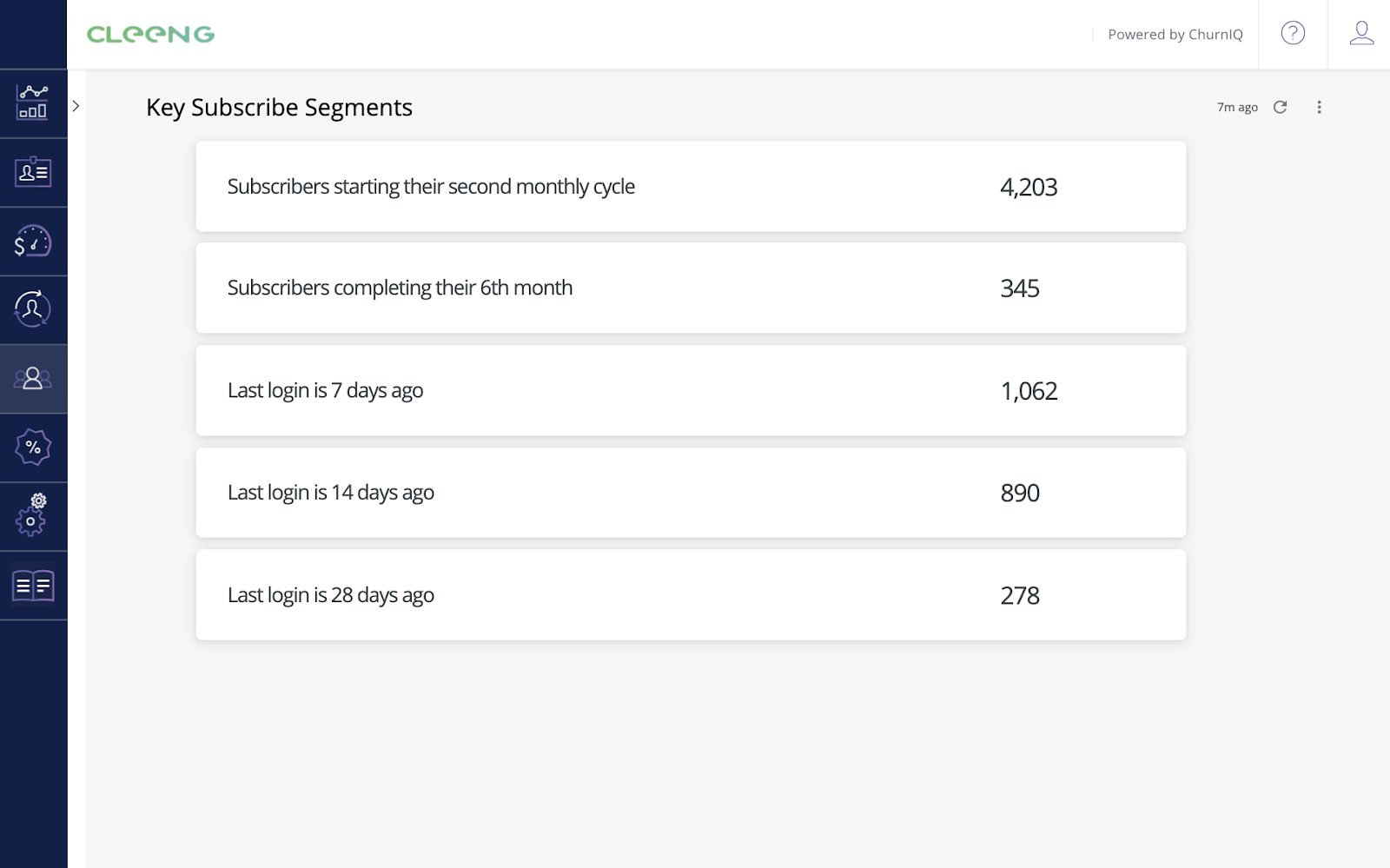
Meet seasonal subscriptions for Sports OTT content
OTT Sports is unlike any other branch of the SVOD industry.
Hear me out.
While Netflix or HBO Max subscribers can easily avoid spoilers and watch a movie or a show for the first time a few years after it was first released, the same cannot apply to sports.
Whether or not they watched a major event, sports fans will know who won the latest FIFA World Cup, Super Bowl, or Formula One Driver Championship.
In other words, the OTT sports industry is facing specific challenges:
- No sports, no customers: why would subscribers stick around between seasons?
- Yearly plans don’t sell well mid-season: why would new subscribers pay full price for less content?
This is why we’ve developed seasonal subscriptions or advanced acquisition and retention features for sports content providers.
They allow sports OTT teams to:
- Sell season tickets that auto-renew when new seasons start to retain subscribers better between seasons and not have to run costly re-acquisition campaigns each year.
- Experiment with dynamic pricing to run special promotions and discount plan prices to win new customers at every point in the season.
Learn more about seasonal subscriptions.
2. Enhance your users’ experience
A mature market means mature customers.
Encouraging customers and subscribers to stick around requires an excellent user experience.
Customers will only settle for a modern, responsive, intuitive platform they can enjoy anywhere, anytime, from multiple devices.
Any shortcomings in these areas will generate frustration, decreased usage and inevitably lead to higher churn rates.

Improving UX involves being attentive throughout the different steps of the customer lifecycle highlighted in the diagram above.
Optimizing these is possible by getting the right partnerships to ensure a seamless sign-up, streaming, renewal, and support experience.
Moreover, providing friction-free payments with the ability to update payment options as needed is also super important to ensure retention and reduce churn for subscribers.
—
Find out how Flow Sports uses customer insights to improve user experience.
3. Create more value with personalization
Personalization is another proven technique to engage viewers, make them feel valued, win, and secure their loyalty.
Let’s take an example.
Statistically speaking, 46% of consumers say they are frustrated by the difficulty locating content on many OTT platforms.
This is a strong use case for OTT platforms to factor personalization into their strategy, push content recommendations based on past-viewing activity, and increase subscriber engagement.
4. Increase the value of your offering with a customer loyalty program or key partnerships
As customer retention is strongly linked to how valued customers feel, SVOD platforms could turn a customer loyalty program into a mean subscriber retention machine.
Now, research from Deloitte reveals that:
- 1 in 2 Millennials and Gen Z consumers would keep a subscription if it included gaming, music, or another SVOD service.
- 1 in 3 say they‘d likely keep a subscription if it included a customer loyalty program.
Remember, your customers are after value.
In other words, by adding subscription plans with unique benefits or add-on services, streaming platforms could increase retention and upsell and cross-sell to their most loyal customer segments.
What’s more, implementing such tactics would support word-of-mouth marketing, grow your competitive advantage, and, therefore, support your customer retention efforts.
5. Pay (more) attention to subscriber analytics and metrics
Whether you're looking to personalize, improve user experience, or design pricing for different segments, you will need advanced algorithms and data analytics to act as the backbone of your subscriber retention strategy.
With millions of users on your streaming platform, there's no better way to understand what’s operating behind the scenes and make the right moves as needed.
Here are a few key metrics you should track to measure and improve customer lifetime revenue.
Subscriber movement
Subscriber movement refers to the net balance between new subscribers and churned subscribers in the period you have selected.
Below is a representation of subscriber movement on the Cleeng platform.
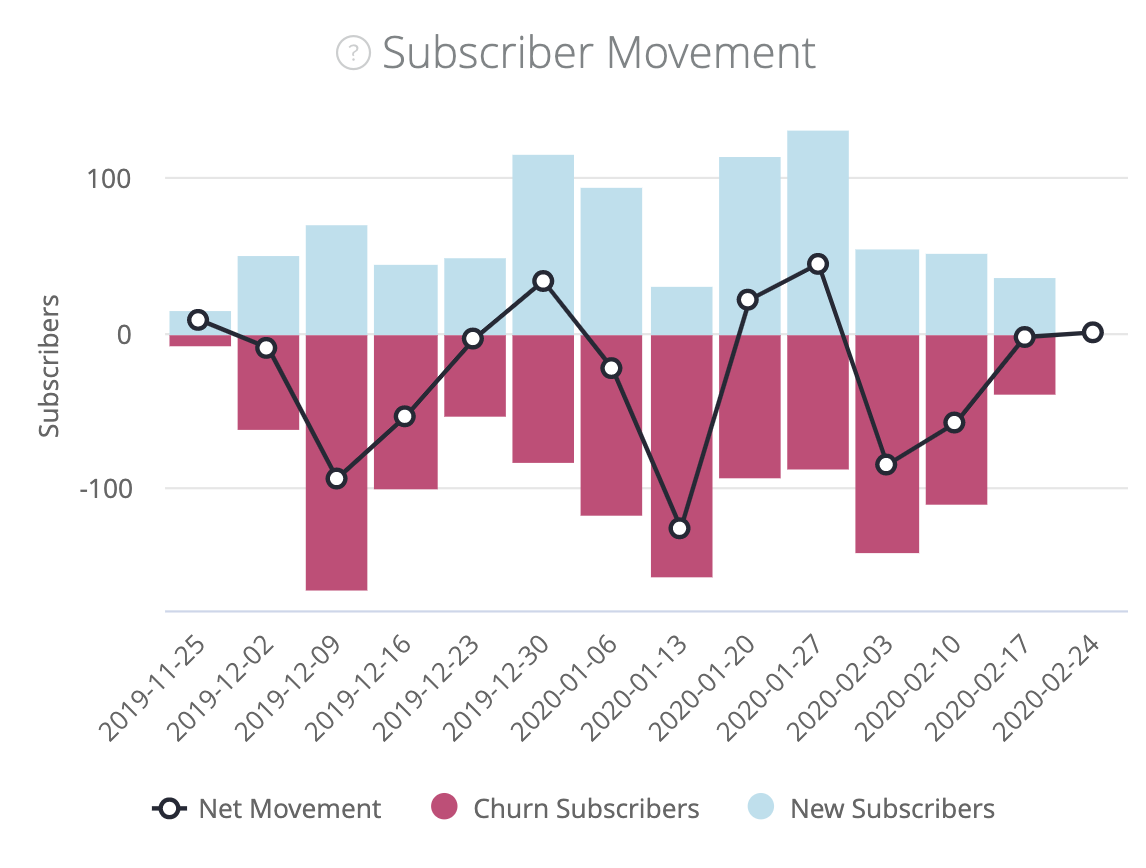
Here, the objective is to keep the Net Movement indicator above 0.
Subscriber churn rate
The churn rate refers to the percentage of customers leaving your platform.
Reducing your churn rate will impact business outcomes more than any other factor, including your subscriber acquisition rate.
That’s because if you have a leaky bucket, you cannot grow sustainably, no matter how many subscribers you acquire.
Let’s take an example.
Suppose a monthly churn rate of 20% implies that 1 in 5 subscribers leaves your service each month (or an average customer lifecycle of 5 months).
Reducing this churn rate by half to only 10% will increase your average subscriber lifecycle to 10 months and double the lifetime value of your subscribers.
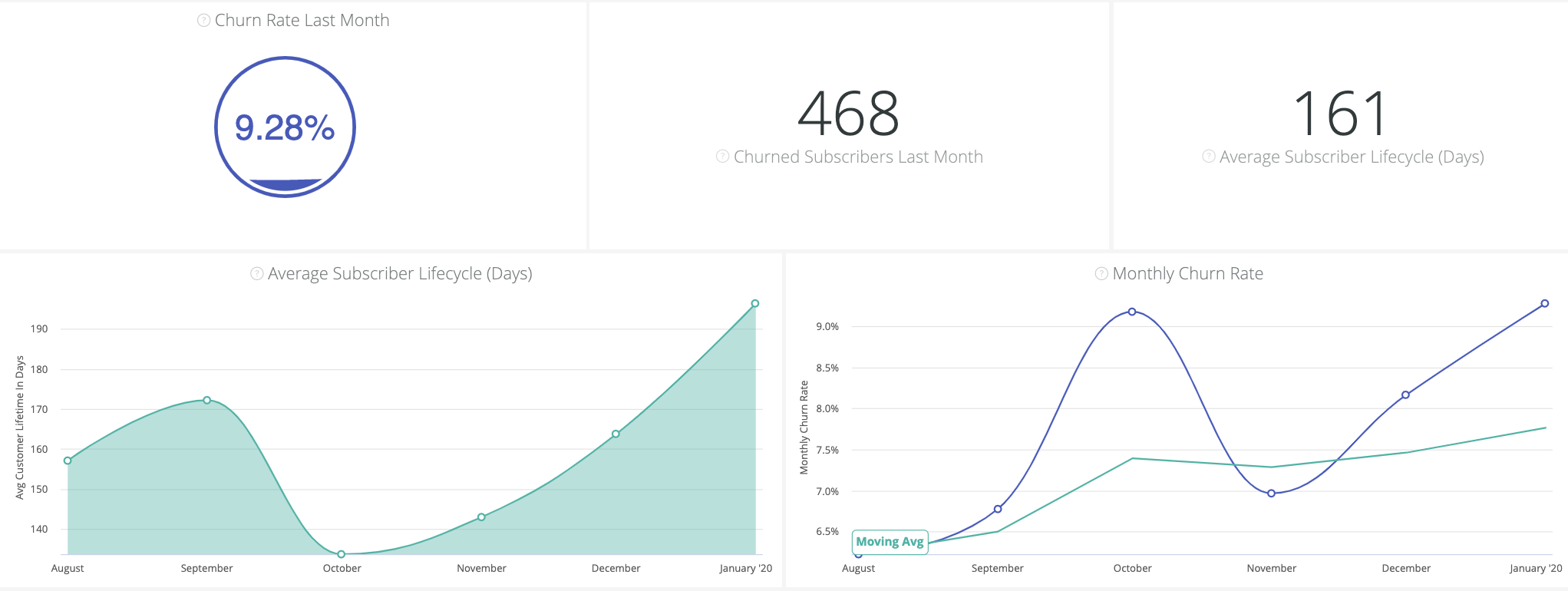
Average Subscriber Lifecycle
This metric measures the length of time subscribers stay with your service before churning.
By growing this time, your retained subscribers can raise your Customer Lifetime Value. This also means a higher return on acquisition efforts and higher Monthly Recurring Revenue (MRR).
In addition to these, there are multiple other metrics you can measure and improve.
Irrespective of the metrics you’re tracking, you'll need a dashboard designed specifically for the media and entertainment industry to make your data actionable.
The only way forward is subscriber retention
As a broadcaster, you need to focus on the twin objectives of customer acquisition and retention.
Now, if you want to optimize your OTT revenue, the best way is to grow your CLV.
To that end, some proven methods to attract and retain your streaming subscribers include offering stellar experiences, strategic personalization, and the right pricing to appeal to diverse audience groups.
You can effectively implement these tactics using sophisticated algorithms and data analytics. Track data that matters to get quick insights into customer behavior and engagement and develop winning retention strategies based on your customers’ needs.

